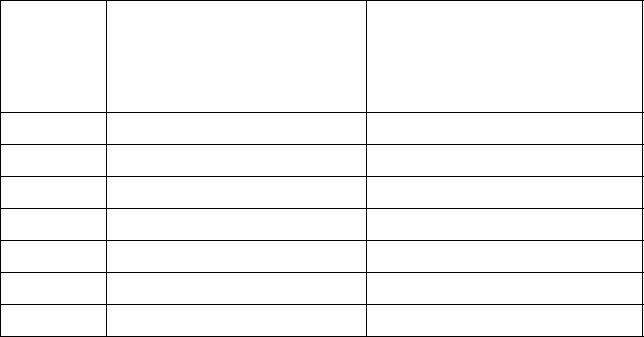
Volume Balancing the Mix Manifold
16 3A0590G
Use Table 2 and the examples provided to approximate
how much pressure drop you can expect for every 50 ft
(15.2 m) of hose at 1 gpm flow in that particular hose for
a 1000 cps viscosity material. Adjust for your applica-
tions flow rate and viscosity.
NOTE: Typical flow rates are usually 0.4-0.8 gpm
(1.5-3 l/mn) per gun depending on tip size and vis-
cosity.
#1 Example: What is the pressure loss of a 2000 cps
material through 150 ft of 3/8 in. ID hose at 0.75 gpm?
690 psi (from chart) x 2 (viscosity factor 2 x 1000 cps) x
3 (3 x 50 ft hoses) x 0.75 (% of gpm) = 3105 psi loss
That is a lot of pressure loss before the spray gun. Let’s
try 1/2 in. hose. See example #2.
#2 Example: What is the pressure loss of a 2000 cps
material through 150 ft of 1/2 in. ID hose at 0.75 gpm?
218 psi (from chart) x 2 (viscosity factor 2 x 1000 cps) x
3 (3 x 50 ft hoses) x 0.75 (% of gpm) = 981 psi loss
NOTE: Avoid under sizing the high volume side.
Pressure drop during flow conditions will increase
momentary hose induced ratio errors. See Table 2.
Table 2: Hose Selection by Pressure Drop
Hose ID
(in.)
Pressure drop per 50 ft
section per 1000 cps at 1
gal/min.
(psi)
Pressure Drop per 15.24
meter section per 1000
cps at 1 liter/min.
(Bar)
1/8 55910 1018
3/16 11044 201
1/4 3494 64
3/8 690 13
1/2 218 4
5/8 89 1.62
3/4 43 0.78
Reference Formula
Pressure drop = 0.0273 QVL/D
4
Key:
Q = Vis poise (centipoise/100)
V= Gallons per minute
L= Length (ft)
D=Inside diameter (in.)
